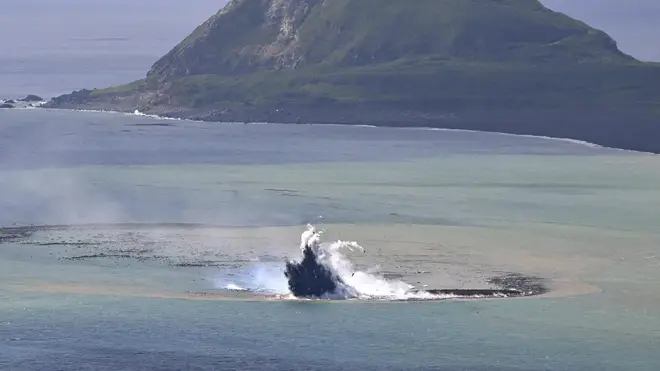
Nick Abbot 10pm - 1am
9 November 2023, 09:44

The unnamed undersea volcano started its latest series of eruptions on October 21.
An undersea volcano erupted off the coast of Japan three weeks ago, providing a rare view of the birth of a tiny new island, but experts say it may not last very long.
The unnamed undersea volcano, about half a mile off the southern coast of Iwo Jima, which Japan calls Ioto, started its latest series of eruptions on October 21.
Within 10 days, volcanic ash and rocks piled up on the shallow seabed, its tip rising above the sea surface.
By early November, it became a new island about 328 feet in diameter and as high as 66 feet above the sea, according to Yuji Usui, an analyst in the Japan Meteorological Agency’s volcanic division.
Volcanic activity has increased near Iwo Jima and similar undersea eruptions have occurred in recent years, but the formation of a new island is a significant development, Mr Usui said.

Volcanic activity at the site has since subsided and the newly formed island has somewhat shrunk because its “crumbly” formation is easily washed away by waves, Mr Usui said.
He said experts are still analysing the development, including details of the deposits.
The new island could survive longer if it is made of lava or something more durable than volcanic rocks such as pumice.
“We just have to see the development,” he said.
“But the island may not last very long.”
Undersea volcanos and seismic activities have formed new islands in the past.
In 2013, an eruption at Nishinoshima in the Pacific Ocean south of Tokyo led to the formation of a new island, which kept growing during a decade-long eruption of the volcano.
Also in 2013, a small island surfaced from the seabed after a massive 7.7-magnitude earthquake in Pakistan.
In 2015, a new island was formed as a result of a month-long eruption of a submarine volcano off the coast of Tonga.
Of about 1,500 active volcanos in the world, 111 are in Japan, which sits on the so-called Pacific ring of fire, according to the Japan Meteorological Agency.